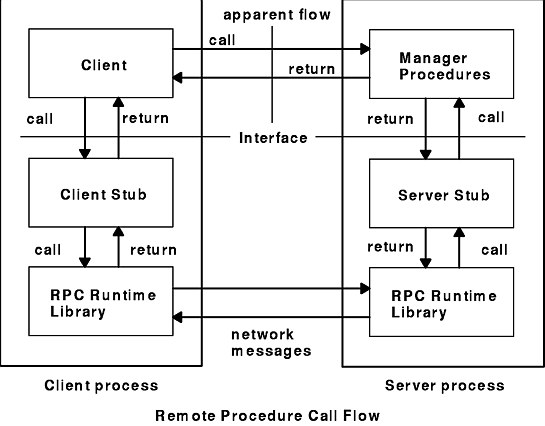RPC Model
The remote procedure call (RPC) model is similar to a local procedure call model. In the local model, the caller places arguments to a procedure in a specified location such as a result register.
Then, the caller transfers control to the procedure. The caller eventually regains control, extracts the results of the procedure, and continues execution.
RPC works in a similar manner, in that one thread of control winds logically through two processes: the caller process and the server process. First, the caller process sends a call message that includes the procedure parameters to the server process. Then, the caller process waits for a reply message (blocks). Next, a process on the server side, which is dormant until the arrival of the call message, extracts the procedure parameters, computes the results, and sends a reply message. The server waits for the next call message. Finally, a process on the caller receives the reply message, extracts the results of the procedure, and the caller resumes execution.
The Remote Procedure Call Flow figure (Figure 1) illustrates the RPC paradigm.

In the RPC model, only one of the two processes is active at any given time. Furthermore, this model is only an example. The RPC protocol makes no restrictions on the concurrency model implemented, and others are possible. For example, an implementation can choose asynchronous Remote Procedure Calls so that the client can continue working while waiting for a reply from the server. Additionally, the server can create a task to process incoming requests and thereby remain free to receive other requests.